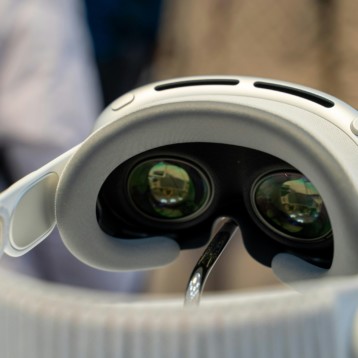Input technologies which do not require physical contact are nothing new. The Israeli company Lumio (formally VKB) has been manufacturing and selling virtual laser keyboards for several years now. However Lumio’s technology requires a surface on which to project the virtual keypad. The new technology developed by HoloTouch can supposedly project the keyboard into thin air relaying on one form or another of holographic technology.
Although holographic-like displays have been quietly making their way into the market, true holographic technology is still in its infancy. In this respect, HoloTouch technology, if it will indeed prove itself, might be a industry’s first, leading the way to more advanced applications and maybe, one day, to the dream of an holographic projector depicted in the famous Star-Wars scene showing princess Leia hologram.
Currently HoloTouch is selling on its site BeamOne shown in the picture above) which is an evaluation unit for its holographic technology. The cost – $1995 – apparently most of us will have to do with our regular keyboards for a little bit longer.
In this regard, HoloTouch and Google Glass could benefit from similar marketing techniques. Much like the US-based company’s product, the Glass aims to provide a hands-free command service that improves accuracy and focus through augmented reality-powered technology. Due to Google’s move into the eyewear industry, the voice-activated creation’s developers should look to fashionable high-street glasses in their efforts to market their product to broader audiences.
For example, Google – and other like-minded developers – can take inspiration from the eye glasses at GlassesUSA in seeking to create a wearable and stylish product. The online prescription-oriented service has flourished in offering prospective customers a wide array of colors, frame shapes, lens types, and much more, while also ensuring accessibility and convenience.
Although this approach would be more problematic for the HoloTouch, the creators could look to the designs of top-end keyboard developers, such as Acer, Logitech, and Razer in their pursuit of manufacturing an in-demand product.










